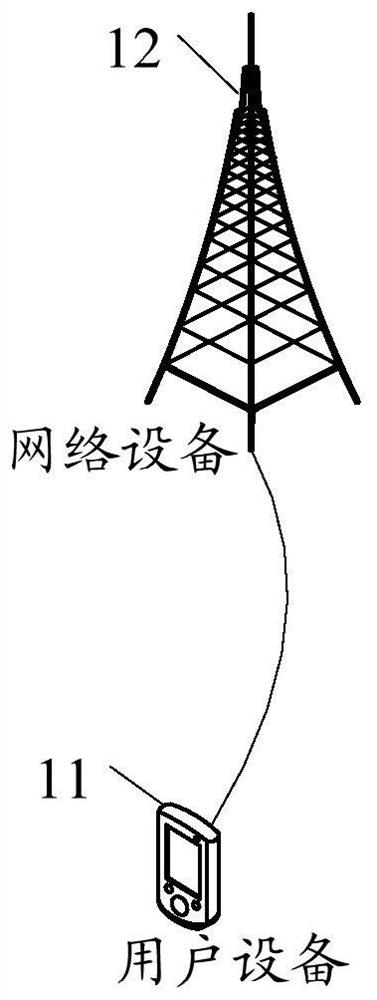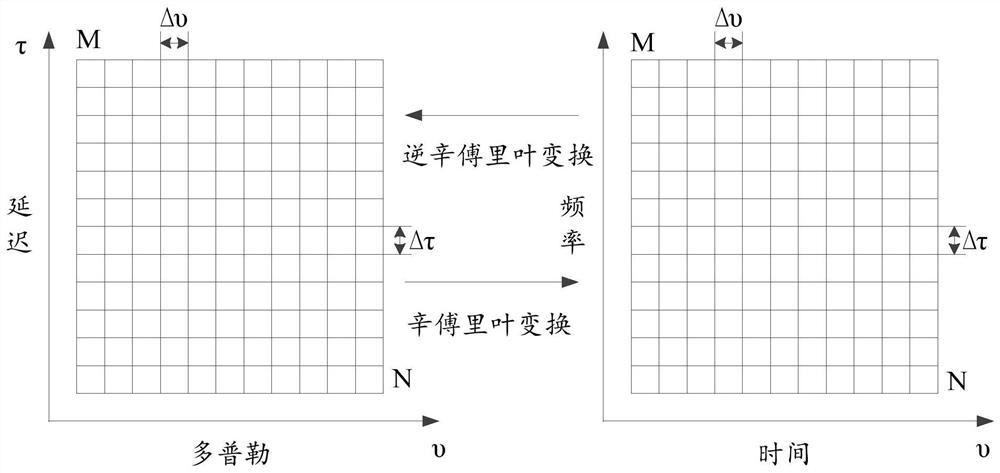Data sending method, data receiving processing method and related equipment
A data sending method and technology of sending equipment, applied in the field of communication, can solve problems such as low resource utilization rate, and achieve the effect of improving utilization rate
- Summary
- Abstract
- Description
- Claims
- Application Information
AI Technical Summary
Problems solved by technology
Method used
Image
Examples
Embodiment 1
[0129] Embodiment 1: In the scenario of multi-user multiplexing, the functions of increasing the delay and Doppler resolution and improving the accuracy of channel estimation are achieved by using interleaved placement of different user data. Figure 6 The time-frequency domain resolutions of are:
[0130]
[0131] In the embodiment of the present application, the delay and Doppler resolution of channel estimation can be improved by sparsely mapping the transformed delayed Doppler domain QAM symbols on physical time-frequency domain resources. Suppose a user data with a dimension of l×k is sparsely mapped, and the symbol interval and subcarrier interval are aΔT and bΔf respectively, then the mapped data is distributed in a rectangular resource block. like Figure 9 The sparse map shown occupies resources as indicated by the dashed box.
[0132] If there is only single-user data, the size of the physical time-frequency resource block that needs to be allocated to the user ...
Embodiment 2
[0143] Embodiment 2: In the scenario of multi-user multiplexing, the functions of increasing the delay and Doppler resolution and improving the accuracy of channel estimation are achieved by using interleaved placement of different user data.
[0144] In the embodiment of the present application, the delay resolution of the channel estimation can be improved by sparsely mapping the transformed QAM symbols in the delayed Doppler domain in the frequency domain. The Doppler resolution can only be achieved by selecting a larger N. like Figure 10 shown, compared to Figure 6 , in order to obtain twice the Doppler resolution, the number of time-domain resources needs to be set to 2N. When the total number of resources remains unchanged, the frequency-domain resources become Therefore, to get 2x the delay resolution, it needs to be quadrupled. Thus, the time domain and frequency domain resolutions of this embodiment are respectively:
[0145]
[0146] See Figure 11 , Fig...
PUM
 Login to View More
Login to View More Abstract
Description
Claims
Application Information
 Login to View More
Login to View More - Generate Ideas
- Intellectual Property
- Life Sciences
- Materials
- Tech Scout
- Unparalleled Data Quality
- Higher Quality Content
- 60% Fewer Hallucinations
Browse by: Latest US Patents, China's latest patents, Technical Efficacy Thesaurus, Application Domain, Technology Topic, Popular Technical Reports.
© 2025 PatSnap. All rights reserved.Legal|Privacy policy|Modern Slavery Act Transparency Statement|Sitemap|About US| Contact US: help@patsnap.com



